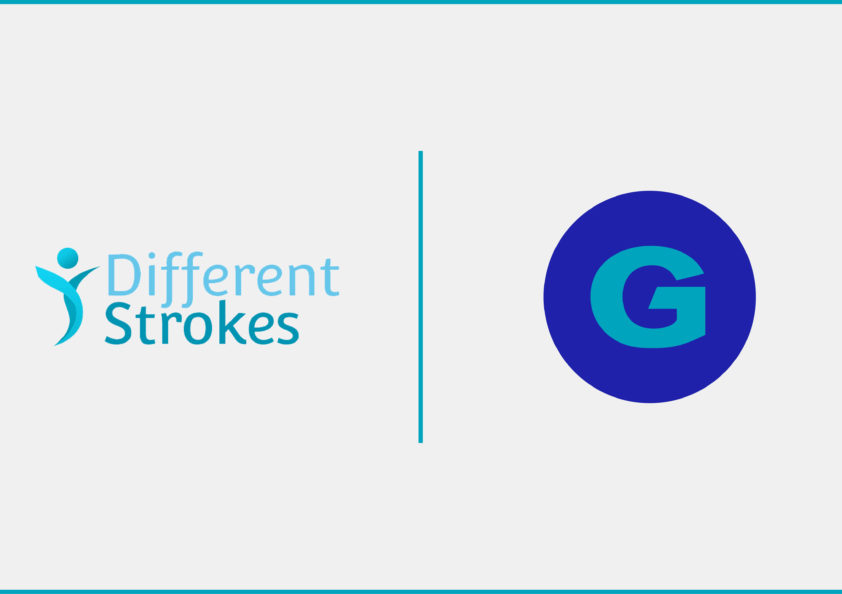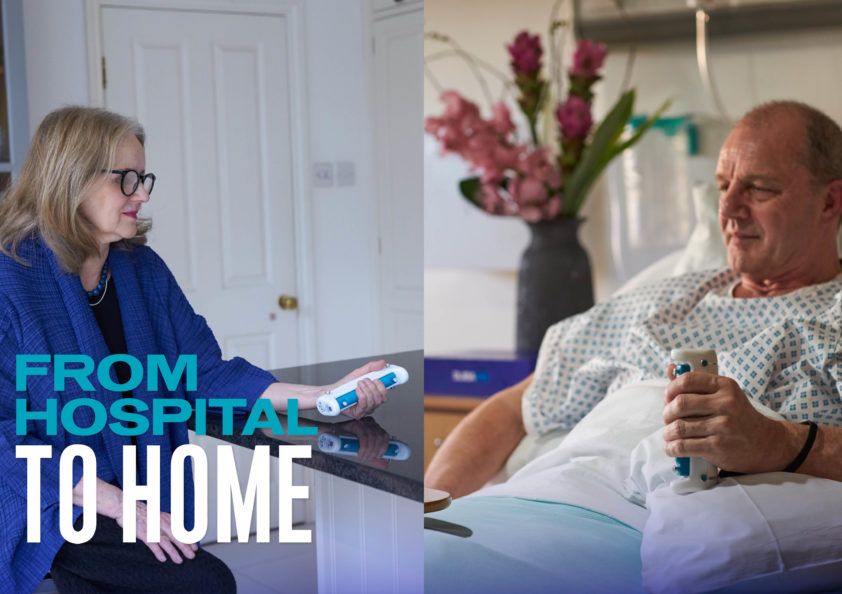
Social prescribing: helping stroke survivors to flourish
Kate Allatt, stroke survivor and GripAble ambassador, unpicks the concept of social prescribing, explains why it is an important part of the stroke and brain injury recovery process, and describes how GripAble is working to connect people and facilitate peer-to-peer support to help them flourish.
Being discharged from hospital following a life-changing event such as a stroke or brain injury is a huge victory for many, but feeling equipped to deal with the transition, and mentally well enough to embark on the next stage of rehabilitation is fundamental to further recovery.
GripAble ambassador Kate knows this only too well. After returning home from hospital following a rare brain stem stroke and developing locked-in syndrome, Kate encountered a number of challenges that held her back from fully flourishing following her stroke. Determined to find ways to help herself, Kate set out on a personal journey to take back control of her life. Kate realised that, for stroke survivors to make the best recovery possible, non-medical, holistic, and wellbeing-focused interventions are key. Known as social prescribing, this approach can enable stroke survivors to improve their health, wellbeing, and social welfare, and if successful, allow them to continue their physical rehab regime and work towards restoring their independence.
What is social prescribing?
Social prescribing is a means of enabling allied health professionals to provide non-medical interventions and refer patients to a range of local, community services to support their health and wellbeing. The concept seeks to address people’s needs in a holistic way, and aims to support individuals to take greater control of their own health. Social prescribing is designed to support people with a wide range of social, emotional, and physical needs and issues, whether this be loneliness and isolation or bereavement.
There has been a wellness explosion on the back of the COVID-19 lockdowns, placing a renewed focus on the importance of emotional wellbeing and reducing health and rehab inequalities. Indeed, the ‘five ways to wellbeing,’ researched and developed by the New Economics Foundation, have been brought to the forefront, as the world searched for new ways to cope with the challenges of being in lockdown at home. The five ways to wellbeing are the foundation of the social prescribing approach, comprising of connection, being active, taking notice (or being mindful), learning, and giving.
To enable survivors of stroke or brain injury to fully engage in their rehab regime, and for it to work, the five ways to wellbeing must be considered.
Why is social prescribing an important part of the recovery process?
To put it bluntly, rehab won’t work unless people feel well enough to take it on. There are many factors that influence whether stroke survivors can progress from simply surviving to thriving upon returning home. But first feeling emotionally and mentally well – or at least, better – is key. Improved mental health helps people to build confidence, self-esteem, and resilience, which will in turn assist with the motivation, adherence, and engagement they need to help them reach their rehab goals.
But specialist mental health support isn’t necessarily easily accessible for all, and even more so in the wake of COVID-19, which has put already overstretched and under resourced mental health services under huge strain.
This is where social prescribing comes in. By focusing on what matters most to people, whether this be forming social connections, taking part in a purposeful activity or learning how to take better care of themselves, the concept offers greater sustainability and accessibility, and takes pressure off the healthcare system.
Following my own return from hospital, I identified a need for support from and connection with peers who would truly understand me and the challenges I was facing. The connections I made with stroke survivors that were ‘like me’ were crucial to my recovery journey and by sharing our achievements with each other, however small they seemed, we encouraged each other to become the best versions of ourselves possible. Exercise also played a key role in my recovery journey, and with the help of a personal trainer – who worked as hard as I did to restore my confidence – I managed to run just one year after my stroke, after being told I’d never be able to walk, talk or use my arms again.
Though I didn’t know it at the time, by surrounding myself with better social support and getting active again, I had discovered some of the core principles of social prescribing and the five ways to wellbeing. It made me realise the importance of holistic, non-medical interventions for stroke survivors leaving hospital, and the urgent need for health professionals to signpost patients to resources that are accessible from home and will enable them to take back control of their lives and stimulate their recovery.
Peer support for stroke survivors with Kate Allatt
Here at GripAble, we understand that, if you’re a stroke or brain injury survivor, or live with conditions such as MS and Cerebral Palsy, it can be difficult to stay motivated to do your daily rehab exercises, as well as factor in maintaining relationships and protecting your mental health.
This is why we believe holistic support is essential, and are working with Kate to facilitate peer-to-peer support to help existing and new users of GripAble to flourish.
We started this off with our first peer support zoom discussion took place on October 19th. The topic was goal-setting after stroke and we had a wide-ranging and inspiring discussion and debate with stroke survivors (stroke warriors!) from across the UK.
To find out more about future peer mentoring discussion sessions, please click here to email Kate Allatt.



